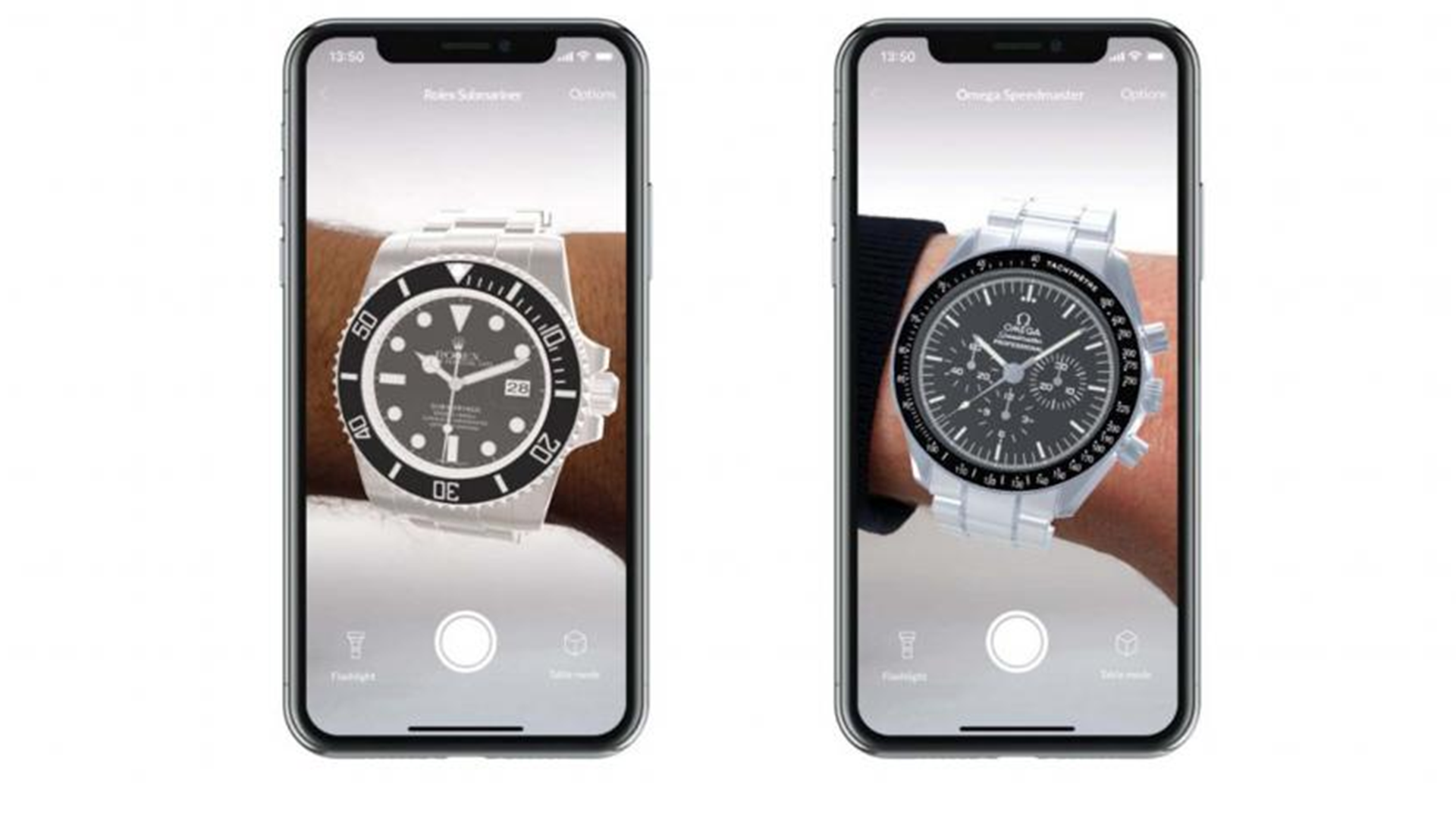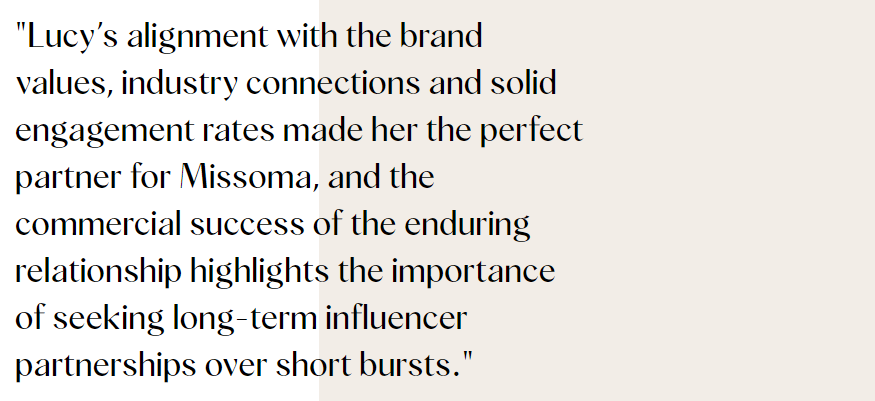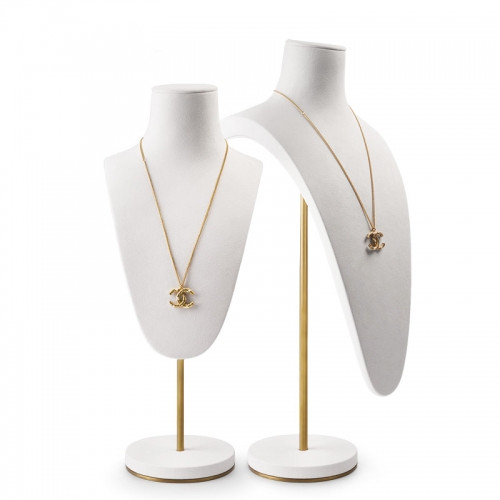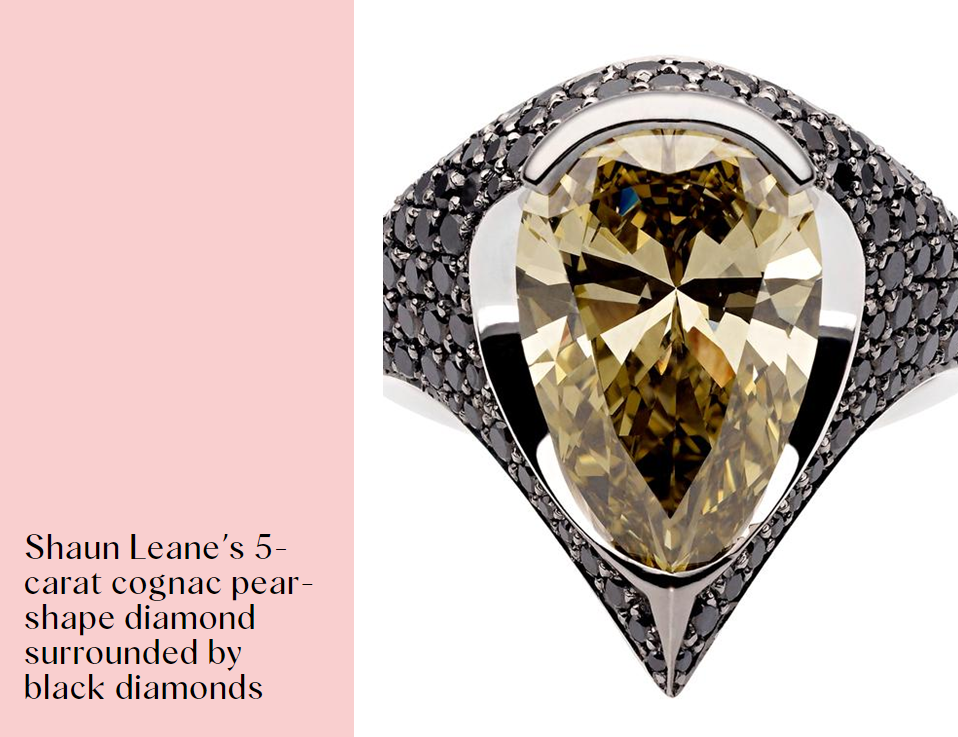The Future of the Jewellery Industry: Trends & Insights
As for sales? Well, consumers are increasingly comfortable shopping online for jewellery—more so since the pandemic—and are much more likely to make high-ticket purchases online than five years ago. According to Gartner L2, the share of online sales across the US and Western European jewellery sales doubled over 2019 to the detriment of brick-and-mortar brands. More than 1 in 20 US jewellers stopped trading in 2018, according to the Jewellers’ Board of Trade (JBT), as companies were forced to either consolidate or close their doors. The UK industry—despite suffering tough trading conditions on the UK high street, not helped by 2020’s lockdowns—still looks to be thriving, largely due to the enduring demand for luxury goods. Even during a pandemic.
But mid-market jewellery brands and retailers are too suffering from declining footfall and consumer uncertainty, and the competition from niche independent brands is rising. Specialist retailers and brands must, therefore, work much harder to stand out from the crowd, avoiding the fate of retailers like Links of London, who succumbed to the threats in 2019.
But despite the fragility of the high street, purchasing of jewellery has gone up: two-thirds of people in the UK have bought jewellery or watches for themselves or someone else within the past five years, which is an increase of 5% in comparison to 2018.
Factors cited as contributors to the global growth of the market include a growing number of digital buyers, an increasing female population, an increasing middle-class population and growing tourism. That said, there are challenges in the form of declining rough-diamond mine supplies, e-Commerce fraud and even delayed marriages.
So what jewellery market trends can we expect to see in 2021 and beyond? How can brands understand the drivers and behaviours from different demographics in order to form effective growth strategies?
Top Jewellery Market Trends: 2021 & Beyond
Life is short. Buy the ring 💍
In March and April 2020, amid early pandemic store closures, retail jewellery sales in the U.S fell by $3.8billion compared to the same period in 2019. Once lockdowns eased in mid-late summer though, it was a different story. Sales grew by $1billion year over year: in no small part, attributable to engagement rings.
The pandemic made people reevaluate their priorities. And some of those who were due to be married in 2020/21 put the savings into upgrading their ring.
Fine jewellery’s main competitor – travel – was off-limits in 2020 and early 2021, meaning affluent couples had more disposable income than usual.
But with nearly a third (32%) of women disappointed in the engagement ring chosen by their partner, some jewellers are offering solutions to ensure that customers find The One. With Clarity, which stocks both natural and lab-grown diamonds, offers 3D-printing technology to create a replica ring to try before making a commitment.
The pandemic influenced consumer tastes in rings, with a notable rise in minimalist, timeless styles. It seems this period of uncertainty led to a desire for rational purchases to offset the sense of unease.
How might this manifest as weddings and events begin to start up again? It remains to be seen, but for now, it looks as though people are still up for seizing the moment.
Create opportunities for rich storytelling
With jewellery being such a personal and symbolic purchase, the experience should be as thorough, and multidimensional, as possible. Storytelling helps consumers connect with individual pieces in the absence of physical proximity.
The German-based online watch marketplace, Chrono24, allows customers to ‘try on’ popular watches using AR technology on their smartphones. 
IWC’s ‘virtual boutique’ takes the in-store experience online, through an interactive tour of a real boutique. Customers can explore different collections and even book an appointment to chat with an advisor for a highly personalised shopping experience.
“At a time where virtual connections are more frequent and accessible than physical ones, visitors can now enjoy the IWC experience, outside the traditional retail infrastructure. This endeavour also affirms our determination in extending the world of IWC to new friends, while strengthening engagements with existing fans of the brand.” Stanislas Rambaud, IWC chief in Southeast Asia
But should online experiences seek to take ‘IRL’ stores and reverse-engineer them into Google Earth-style digital tours? Sometimes it can be more impactful to create powerful, digital-first content that is designed for its medium.
Transitioning heritage luxury brands online can be a challenge, but by playing to the strengths of a digital medium you can use it to your advantage. In the absence of touch, how can you dial up the visual experience? What about bringing the stories behind each piece to life through compelling copywriting?
Jewellery brands go social-first
And talking of digital-first – never underestimate the value of bespoke social media content.
Social media has never been more important to all brands, across all sectors than it is now. Developing a social-first approach to campaigns is one of the most effective strategies in increasing brand awareness and reaching new audiences.
Missoma, a demi-fine jewellery brand targeted at women in their 20s and 30s, transformed from a majority wholesale brand to 95% online in 2015. This, says its founder Marisa Hordern, helped the brand understand its audience and where to find them (hint: Instagram). The brand implemented a robust influencer strategy, gifting pieces to carefully-selected women who fit the brand’s aesthetic and values. Not only that, they were one of the first brands to take it a step further and produce an original collection with an influencer.
Their Missoma x Lucy Williams collection has been a staple of Missoma’s offering for six years, consistently selling out and even attracting a celebrity following in the form of Bella Hadid and Alexa Chung. 
Lucy’s alignment with the brand values, industry connections and solid engagement rates made her the perfect partner for Missoma, and the commercial success of the enduring relationship highlights the importance of seeking long-term influencer partnerships over short bursts.
High-end fashion jewellery lines
As one of the fastest-growing divisions of luxury, it’s no surprise that fashion houses are rushing to enter the market. And what high-end fashion houses lack in high jewellery experience, they make up for in brand power. Asian consumers in particular seek products that are “instantly recognisable across a bar or a restaurant” — something that these groups can provide.
Giorgio Armani Privé, Prada, Dolce & Gabbana and Hermès all debuted their first high jewellery collections in 2019. Gucci, owned by Kering, also entered the high jewellery market, debuting a garden-themed haute joaillerie collection during the twice-yearly couture shows in Paris with a dedicated space in the Place Vendôme. The Hortus Deliciarum collection, Latin for “Garden of Delights,” consists of more than 200 pieces, the majority of which are one-of-a-kind.
Louis Vuitton entered the fine jewellery market in 2012, where it competes with the LVMH-owned Bulgari and Richemont’s Cartier. Michael Burke, chairman and chief executive of Louis Vuitton told the Financial Times, “It’s the biggest potential we have right now,” noting that jewellery is currently “one of the highest-growth categories we have, if not the highest”.
And Louis Vuitton is certainly putting its money where its mouth is. Following the $16.2 billion purchase of Tiffany by LVMH, the French behemoth signalled that it is set to dominate the high-end jewellery market by purchasing the ultimate status symbol: the largest rough diamond discovered since 1905, the 1,758-carat Sewelo diamond. Estimated at being worth between $6.5 million and $19.5 million, it was displayed at the Louis Vuitton Place Vendôme store in Paris and was presented to clients and press during a preview and 80-person dinner at the couture shows in Paris, before embarking on a “world tour” (First stop: Taiwan).
Crystal clear production
Ethical transparency around jewellery production is critical now, especially among millennials, who favour products and businesses that have a conscience. The 4 Cs will no longer cut it –– millennials want to be assured that what they are buying has not had a negative impact on humans or the environment. The provenance of the stone is key.
There’s a clear shift here in the previously mysterious world of diamonds. A fascination with the stone, coupled with the increasing demand for sustainable production processes and traceable, ethical supply chains, means new procedures are coming into play.
Nanotechnology is helping on the mission to make the diamond industry more traceable, with the purpose of clearing the supply chain of counterfeits and conflict stones.
In March 2021, New York-based Nano Innovator Holdings (NIH) unveiled a prototype platform for end-to-end identification of rough and polished diamonds. It uses nanotechnology applications to place a proprietary nano-tag under the diamond’s surface using femtosecond laser technology, without changing the diamond’s clarity or colour. 
Customers can use a (patent-pending) app to detect the tag and discover the lifecycle of their diamond.
Jewellery trends: WFH chic
If all people can see on Zoom calls is your face (and your background), we may as well let our ear adornments do the talking.
Minimalist jewellery label Misho’s Airpod jewellery helps give work from home looks a little extra ‘zhush’.
And Danish designer Vibe Harsløf creates AirPod jewellery in 18-carat gold-plating, designed to neatly cover up your AirPods.

Sustainable jewellery manufacturing
Mintel’s report demonstrates that sustainability and ethics are top of mind for 55% of UK jewellery buyers, who say it’s important for them that the jewellery and watches they purchase are made ethically.
With an increased awareness of sustainability comes a desire for recycled materials: many contemporary jewellers have been using mainly recycled gold for years, while others –– such as Lilian Von Trapp and Vieri –– work exclusively with it.
Breitling x Outerknown’s NATO straps are crafted from regenerated nylon waste, some of which is sourced from fishing nets from the world’s oceans.
British brand Lylie’s uses precious metal salvaged from technology waste, dental waste and clients’ unwanted scrap: a process known as ‘e-mining’.
We can expect to see more jewellers shaking off the drab connotations of ‘recycling’ and elevating it to a luxury practice in 2021 and beyond.
During the annual ChangeNow summit in January, Kering announced it had achieved 88% traceability for key raw materials, an important metric for brands to use to verify their environmental impacts and sustainability claims. Kering is investing in technology and innovation to support its sustainability initiatives and has established a materials innovation lab for sustainable innovation in jewellery and watches.
Jewellery trends: the fifth ‘C’: customisation
Rising demand for bespoke commissions reflects the luxury-wide demand for personalisation, but it’s also linked directly to upcycling.
“Year on year, our bespoke department is growing as customers like to have their own choices incorporated into the design of the ring. Upcycling is also showing no signs of abating with the redesign and use of old stones key, whether it’s a family piece remodelled for the next generation or instead of having lots of jewellery pieces, one large piece of jewellery is made and the stones are reused.” –– Carol Sinfield, Hockley Mint
Lylie’s storied approach to the history of their recycled raw materials gives each piece a unique backstory, which is desirable to customers who are seeking a piece with meaning.
Louis Vuitton traditionally bought cut gems but has started buying rough stones after seeing a surge in demand for unique creations, working with clients directly to determine their final forms.
The brand’s recent hire of Francesca Amfitheatrof, the former design director of Tiffany, as artistic director of watches and jewellery, signals their intention to stand out. A trained metalsmith, Amfitheatrof creates bold, daring designs for customers keen to assert their strength and independence. Her debut haute joaillerie collection took inspiration from medieval heroines such as Joan of Arc and Eleanor of Aquitaine.
In addition to unique designs, brands also want to offer unique takes on the diamonds themselves. LVMH patented two proprietary diamond cuts in the form of its monogram, a flower and a star. A brilliant-cut diamond has 57 facets –– Louis Vuitton’s have between 61 and 77. Of course.
Trending: genderfluid jewellery
As gender fluidity becomes more commonplace (35% of Gen Z know someone identifying as non-binary, a 2018 Pew study found), boundaries are being broken in jewellery trends, from watches to wedding rings and beyond.
While male jewellery has always existed, more unisex pieces are coming to the fore –– for example, Gucci’s first jewellery collection is targeted at no specific gender, and Bugari’s B.Zero1 Rock collections are contemporary, cool and unisex.
Instead of buying for special occasions, people of all genders are buying for themselves. Generation Z is particularly resistant to classifications or labels. This presents an opportunity for brands to target products at all types of individual as well as relationships or occasions.
London-based Shaun Leane is a pioneer in genderfluid jewels. The designer, who founded his brand in 1999 after designing jewellery for Alexander McQueen, has reported a rise in bespoke engagement rings for gay couples.
The Rise of Demi-Fine Jewellery
‘Demi-fine’ is an emerging jewellery category that nestles neatly between fine and costume. Incorporating precious and semi-precious stones, and made from precious metals, it has intrinsic value without the price tag of high or fine jewellery. It is expected to grow at a prolific rate due to the contemporary, trend-led designs and accessible prices. The growing e-commerce industry, increasing presence of brands online, and rising usage of social media and apps has resulted in a lucrative opportunity for the market to expand its customer base.
We are seeing established houses from Cartier to Boucheron doubling down on entry-level, affordable ranges to boost their top lines.
New jewellery sales models
Retailers are relying less on ‘special occasion’ purchases. According to Gartner L2, the share of online sales across US and Western European jewellery doubled over 2019.
Subscription services, like Switch, MintGoose and Pura Vida jewellery club allow customers to loan high jewellery, for a fraction of the cost of purchasing.

Disruption in the jewellery industry
Jewellery has been disrupted by the big marketing budgets and social media capability of fashion brands. But there is further scope for eCommerce advancement, particularly across social media channels.
For businesses looking to optimise social commerce, focus on great product imagery, shoppable features on visually-led social networks, and an optimised eCommerce site that is ready for social media users being funnelled through. As customers are often taken from social media to the checkout page, particular attention should be paid to this area — especially considering that overly-long and complicated checkout processes are a common cause of shopping cart abandonment.
Consumers need to also see reflections of themselves in jewellery marketing. We are in the midst of a second revolution in gender, LGBTQ+, racial and age equality. This needs to be visible across the industry, with transparency over price and ethics.
A regeneration is underway as new players take to the fore, and distinctive category trends take shape. Enduring though it may be, the category is undergoing change. Customers will, and do, purchase jewellery online: the key is creating a seamless customer journey that conveys the storied history of each piece.
This article is from: MOF Team